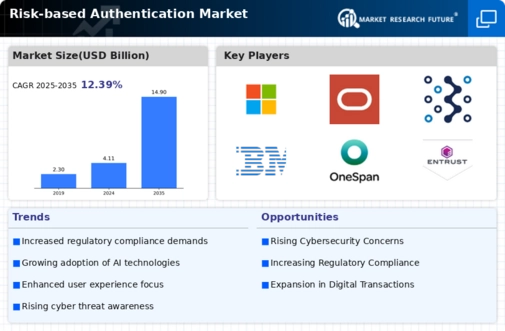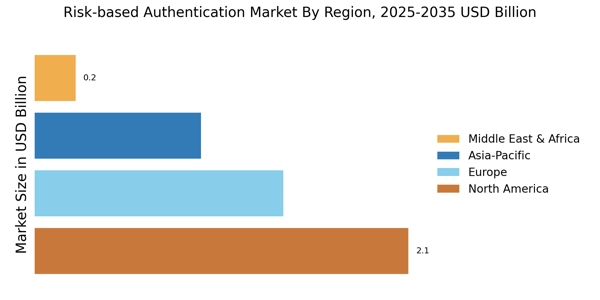Increasing Cybersecurity Threats
The rise in cybersecurity threats is a primary driver for the Risk-based Authentication Market. Organizations are increasingly facing sophisticated attacks, which necessitate robust security measures. According to recent data, cybercrime is projected to cost businesses over 10 trillion dollars annually by 2025. This alarming trend compels companies to adopt risk-based authentication solutions to mitigate potential breaches. By analyzing user behavior and contextual factors, these solutions enhance security without compromising user experience. As organizations prioritize cybersecurity, the demand for risk-based authentication technologies is expected to surge, indicating a strong growth trajectory for the market.
Growing Adoption of Cloud Services
The rapid adoption of cloud services significantly influences the Risk-based Authentication Market. As businesses migrate to cloud environments, they encounter unique security challenges that traditional authentication methods may not adequately address. The cloud services market is anticipated to reach over 800 billion dollars by 2025, driving the need for advanced security solutions. Risk-based authentication offers a flexible approach, allowing organizations to assess risk levels based on user behavior and environmental factors. This adaptability is crucial in a cloud-centric landscape, where security measures must evolve to protect sensitive data effectively. Consequently, the market for risk-based authentication is likely to expand in tandem with cloud service adoption.
Rising Awareness of Identity Theft
The rising awareness of identity theft is a critical driver for the Risk-based Authentication Market. As consumers become more informed about the risks associated with online transactions, they demand stronger security measures from organizations. Identity theft incidents have surged, prompting businesses to prioritize user security. The market for identity theft protection services is expected to grow significantly, indicating a heightened focus on safeguarding personal information. Risk-based authentication solutions address these concerns by providing a tailored approach to security that considers user behavior and risk factors. This growing awareness among consumers is likely to drive the adoption of risk-based authentication technologies, further fueling market growth.
Shift Towards Digital Transformation
The ongoing shift towards digital transformation is reshaping the Risk-based Authentication Market. As organizations embrace digital technologies, they face increased vulnerabilities that necessitate advanced security measures. The digital transformation market is projected to exceed 2 trillion dollars by 2025, highlighting the urgency for effective authentication solutions. Risk-based authentication plays a crucial role in this transition by providing a dynamic security framework that adjusts to user behavior and contextual factors. This adaptability not only enhances security but also improves user experience, making it an attractive option for businesses undergoing digital transformation. The convergence of these trends is likely to propel the growth of the risk-based authentication market.
Regulatory Pressures and Compliance Requirements
Regulatory pressures are a significant driver for the Risk-based Authentication Market. With the implementation of stringent data protection regulations, such as the General Data Protection Regulation (GDPR) and the California Consumer Privacy Act (CCPA), organizations are compelled to enhance their security frameworks. Non-compliance can result in hefty fines and reputational damage, prompting businesses to invest in risk-based authentication solutions. These solutions not only help in meeting compliance requirements but also provide a layered security approach that adapts to varying risk levels. As regulatory scrutiny intensifies, the demand for risk-based authentication technologies is expected to grow, reflecting the industry's response to compliance challenges.


















Leave a Comment